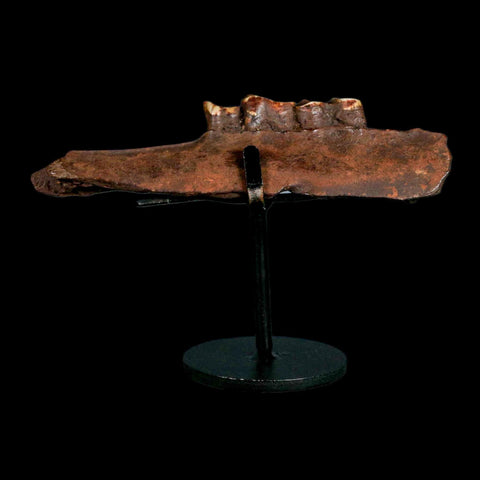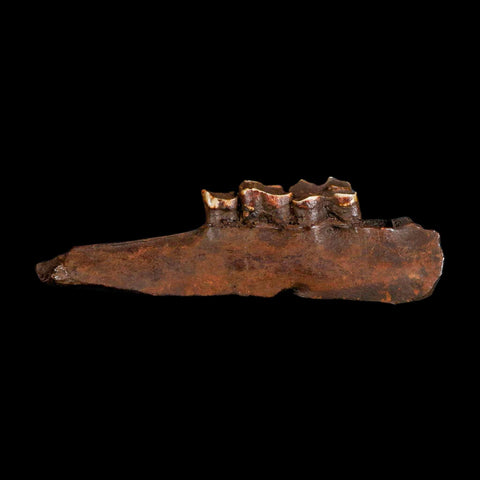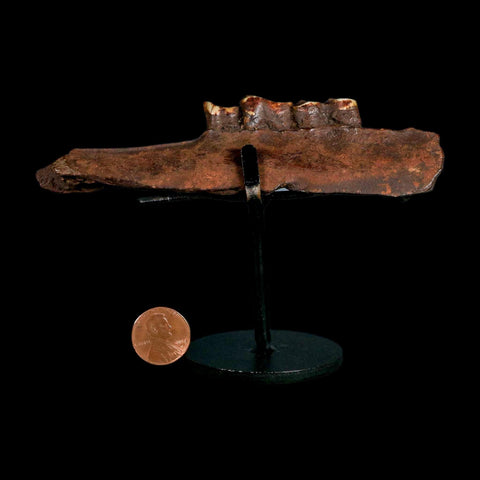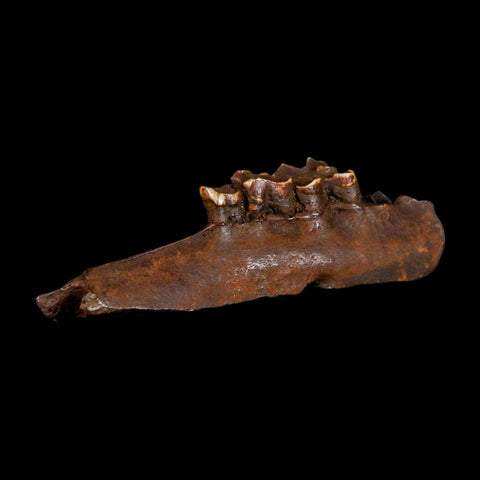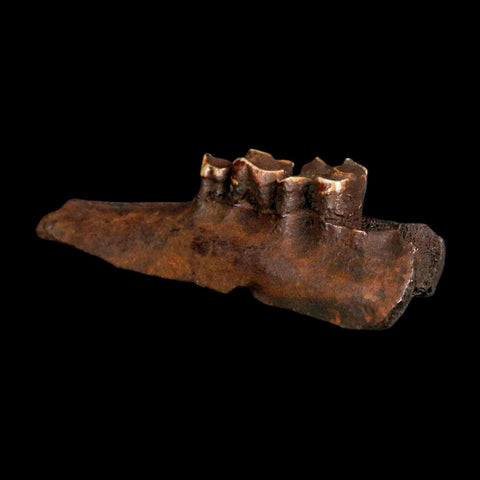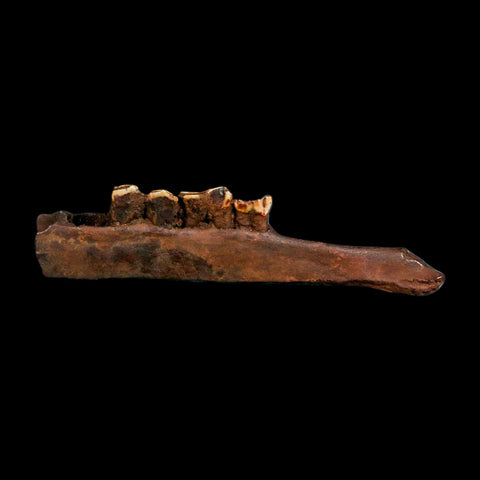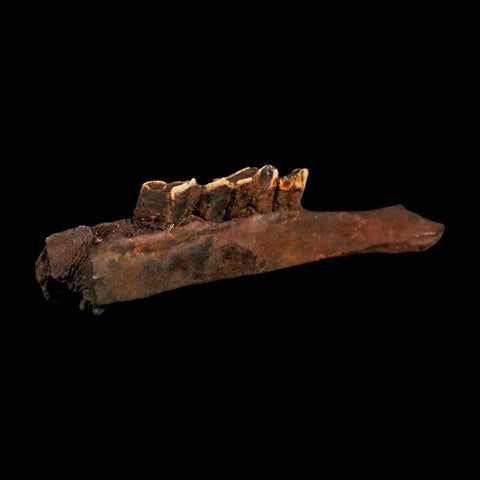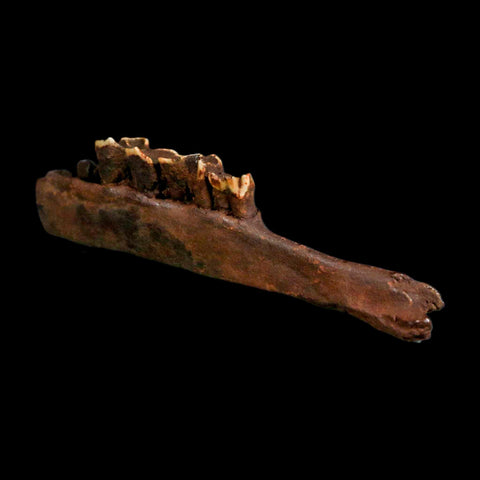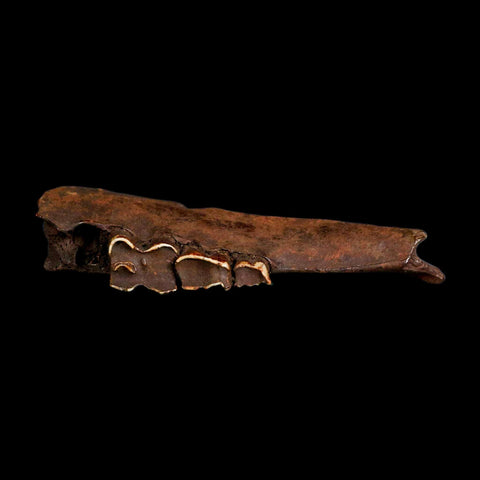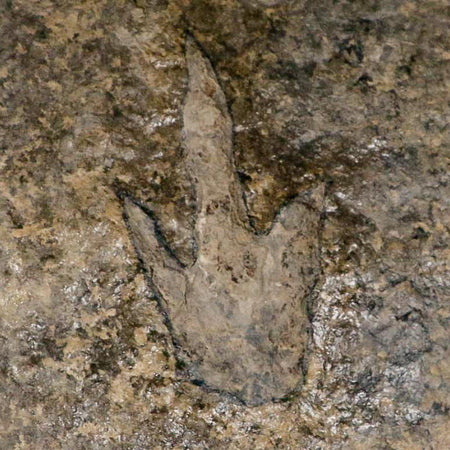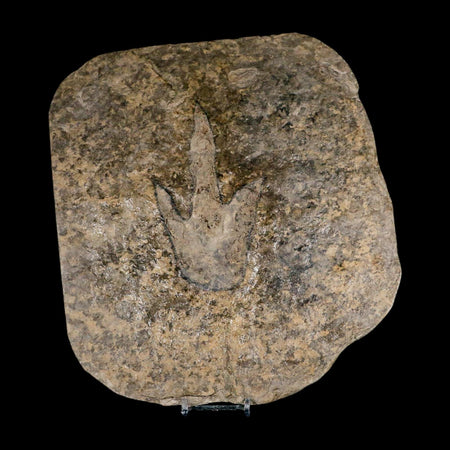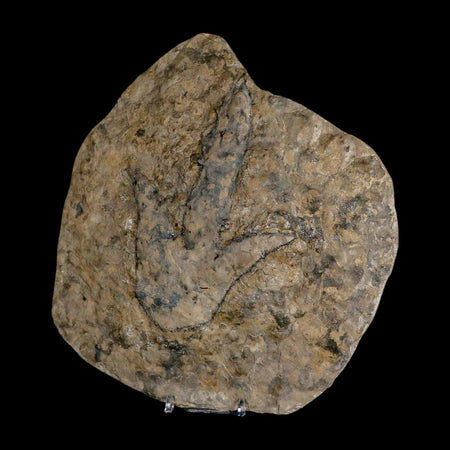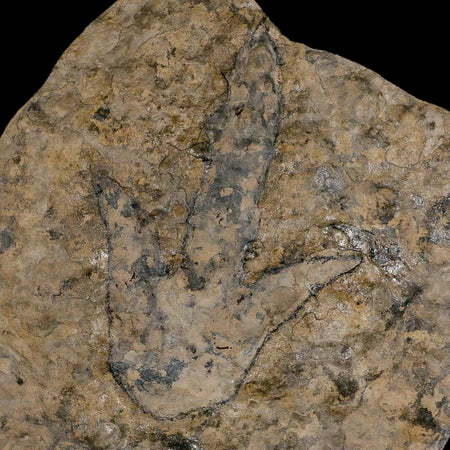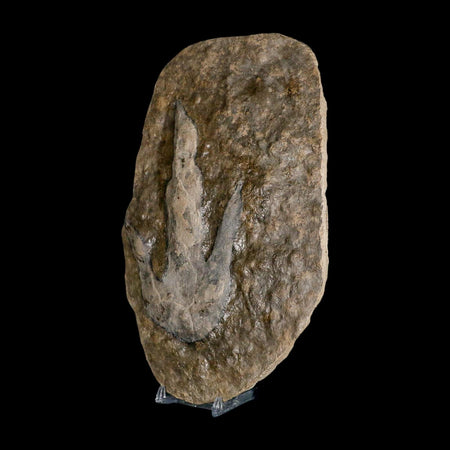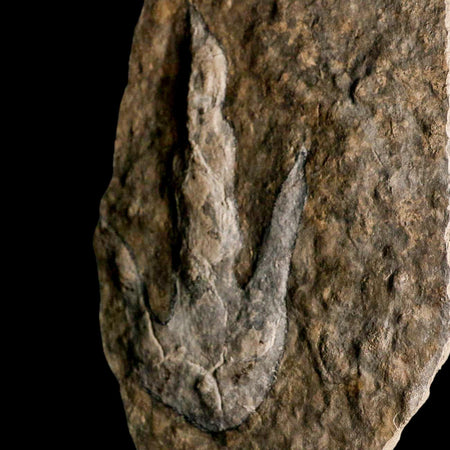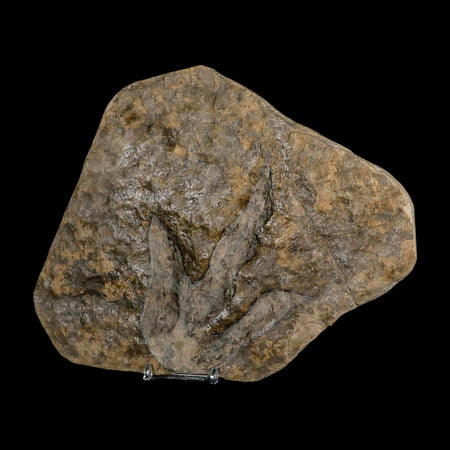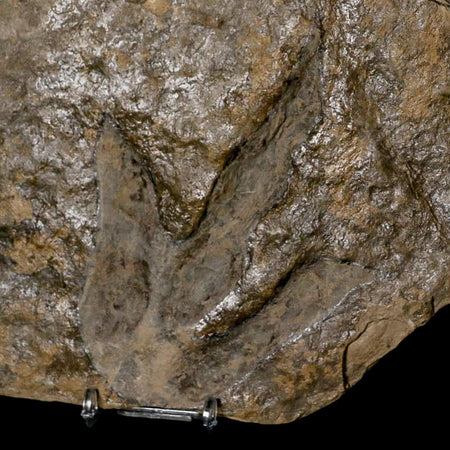5" Palaeolama Mirfica Fossil Jaw Teeth Late Pleistocene Florida llama Metal Stand
Location: Florida
Weight: 4.6 Ounces (With Metal Stand)
Dimensions: 5 Inches Long, 3.3 Inches Wide, 0.2 Inches Thick (With Metal Stand)
Fossil Dimensions: 5 Inches Long, 1.5 Inches Wide, 0.9 Inches Thick
Comes with a Certificate of Authenticity.
Comes with a Custom Metal Stand.
The item pictured is the one you will receive.
Late Pleistocene, 3.6 million years ago to about 11,700 years ago
Palaeolama mirifica, also known as the Florida llama, was an extinct camelid that inhabited North America during the Pleistocene epoch. Its fossils are mainly found in Florida, offering valuable insights into the paleoecology and fauna of the area during that time. Morphologically, it was a medium-sized camelid, different from modern llamas and guanacos. Its skeletal structure shows adaptations for both grazing and browsing, indicating a mixed diet. The shape of its molars supports this, as they are suited for processing abrasive plants. Its limb bones suggest it was well-adapted for running, capable of swift movement across open terrain. Fossil finds, often alongside other Pleistocene megafauna in Florida—such as sinkholes and river deposits—help reconstruct its habitat, which likely included grasslands, savannas, and open woodlands. Its distribution across North and South America shows it was part of a successful lineage that occupied various ecological niches before becoming extinct at the end of the Pleistocene. Its extinction, like that of many large Pleistocene mammals, is thought to result from climate shifts and possibly human hunting, though the exact causes are still being studied.


